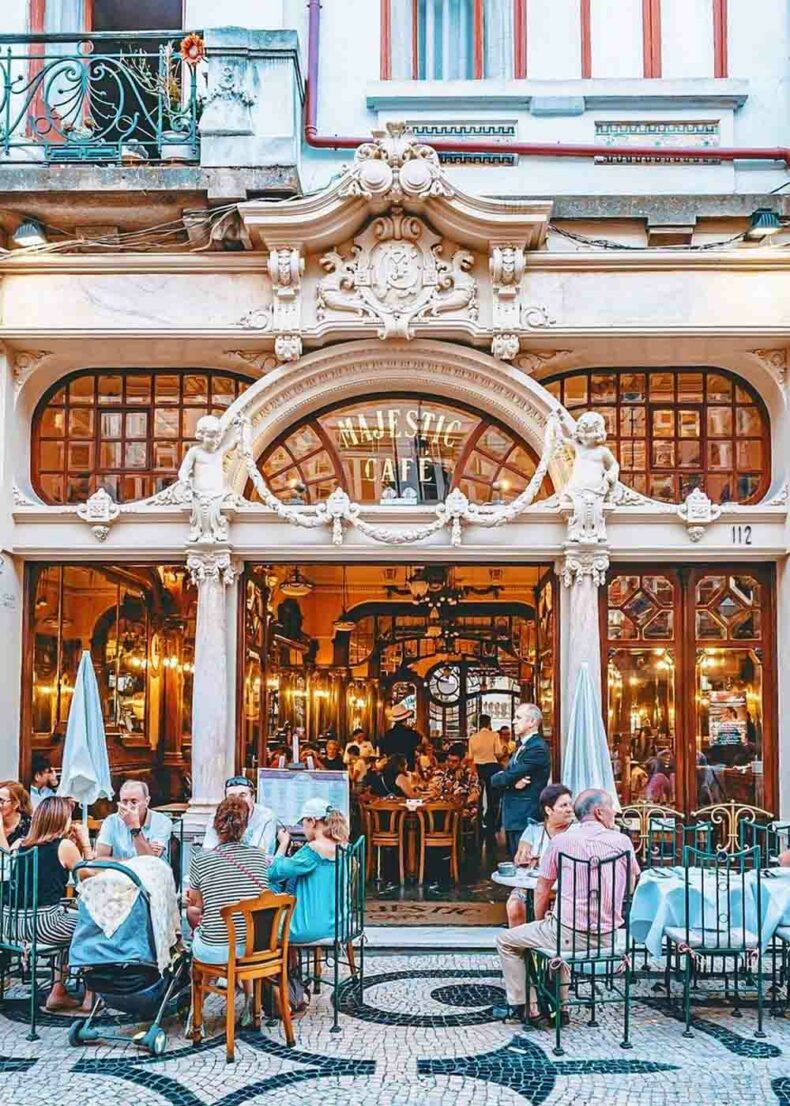Exciting gastronomical culture, centuries-old wine traditions, a thriving art scene, booming nightlife, spectacular architecture, beaches, and stellar views.
While Porto might be Lisbon’s little sister, there’s nothing small about the impressions it delivers.
We’ve rounded up the best reasons to visit Porto and the best things to do while you’re there.
- Check out the most beautiful places in Porto
- Get to know the vibrant creative scene of Porto
- Indulge in delicious Portuguese cuisine
- Escape the city for a great day out
- Take an unforgettable road trip to the Douro Valley
Although it’s Portugal’s second-biggest city, Porto can be easily explored in a few days thanks to its fairly modest size.
But don’t let the short distances fool you – its hilly terrain gives the legs plenty of work (comfy shoes required!) and rewards with spectacular views over the city.
And if that’s not enough, the palm-lined boardwalks and beaches along the Atlantic Ocean at Foz do Douro, Porto’s westernmost district, lie just a brief tram ride away.
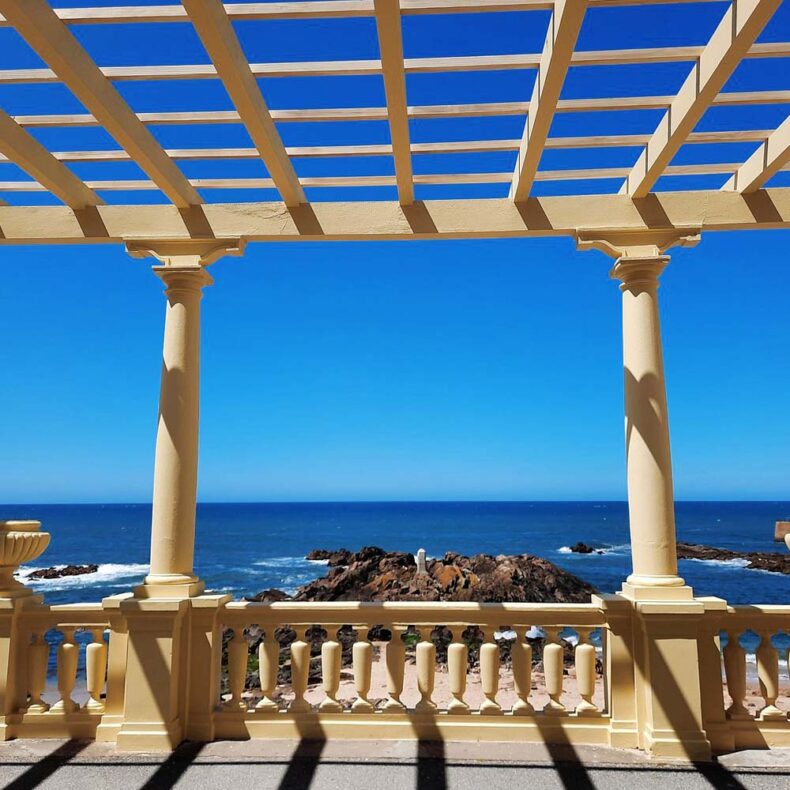
Photo source: Tripadvisor
Check out the most beautiful places in Porto
Before going to Porto, stock up on film and clear your phone gallery, because Porto was born to be in front of a camera.
Founded on the hilly banks of the Douro River, the city is peppered with miradouros, or viewpoints.
For example, the hilltop Miradouro da Serra do Pilar on the opposite side of the river gives a first-rate view of the famous Dom Luís I Bridge and is arguably the best spot for watching the sunset.
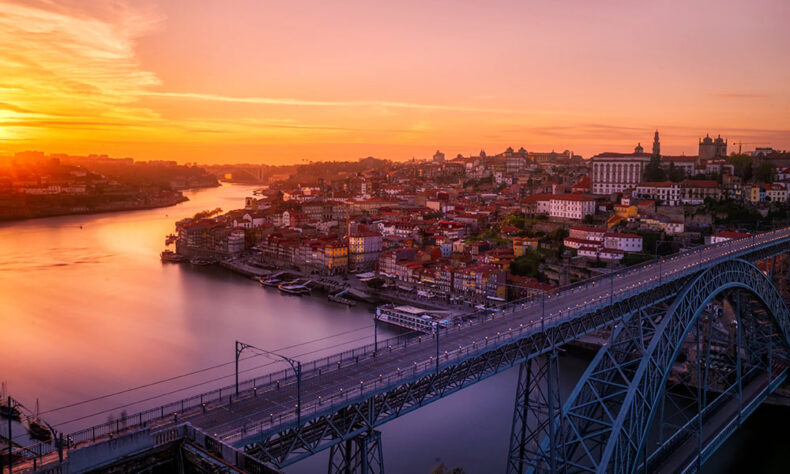
Photo source: Unsplash
The lookout stands next to a 16th-century monastery.
Many of the city’s icons boast spectacular vistas, including Clérigos Tower, which rises 75 metres above the skyline.
![]()
Photo source: Unsplash
Next to this 18th-century architectural marvel lie the manicured gardens of the Jardim das Oliveiras.
Another symbol of Porto – the Sé Cathedral – is an impressive mix of Romanesque, Gothic, and Baroque architecture. The centrepiece is the opulent silver altarpiece.

Photo source: Tripadvisor
Sé is also what the locals call the quarter of charming little streets surrounding the cathedral, which are perfect for wandering around without using Google Maps.
The surrounding Ribeira district by the river is a UNESCO World Heritage Site and provides plenty of spectacles at eye level.
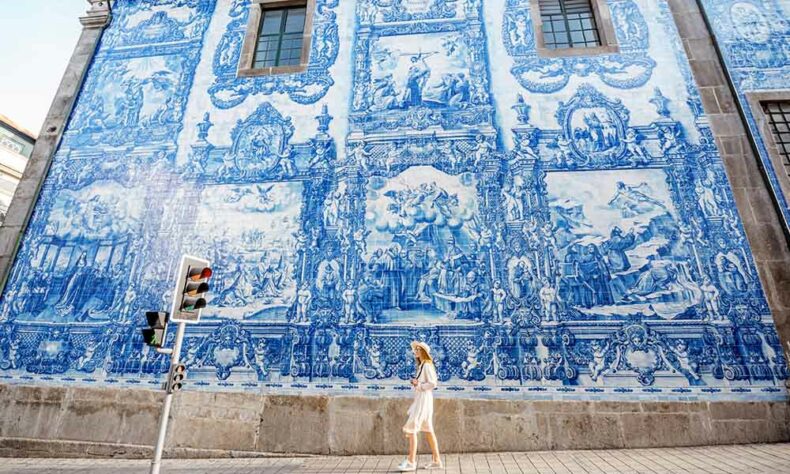
If you’re a fan of azulejos tiles, the façade of the Igreja do Carmo church is dressed in stunning white and blue tiles.
Likewise, the São Bento train station is decked out in 20,000 painted tiles depicting scenes from Portugal’s history and everyday life.
Another building worth peeking into is the Palácio da Bolsa. This 19th-century Neoclassical palace and former stock exchange has many opulent rooms designed by different artists.
The original trading floor is topped by an impressive octagonal glass-and-metal dome.

Photo source: Palacio da Bolsa
Next on the list of visually arresting places is the century-old Livraria Lello bookstore, named the third most beautiful in the world by The Guardian.
With dark wooden arches, a dramatic staircase, and spectacular stained-glass windows, this Neo-Gothic and Art Nouveau space oozes with opulence.
It’s also said to have inspired J. K. Rowling, the author of the Harry Potter books.
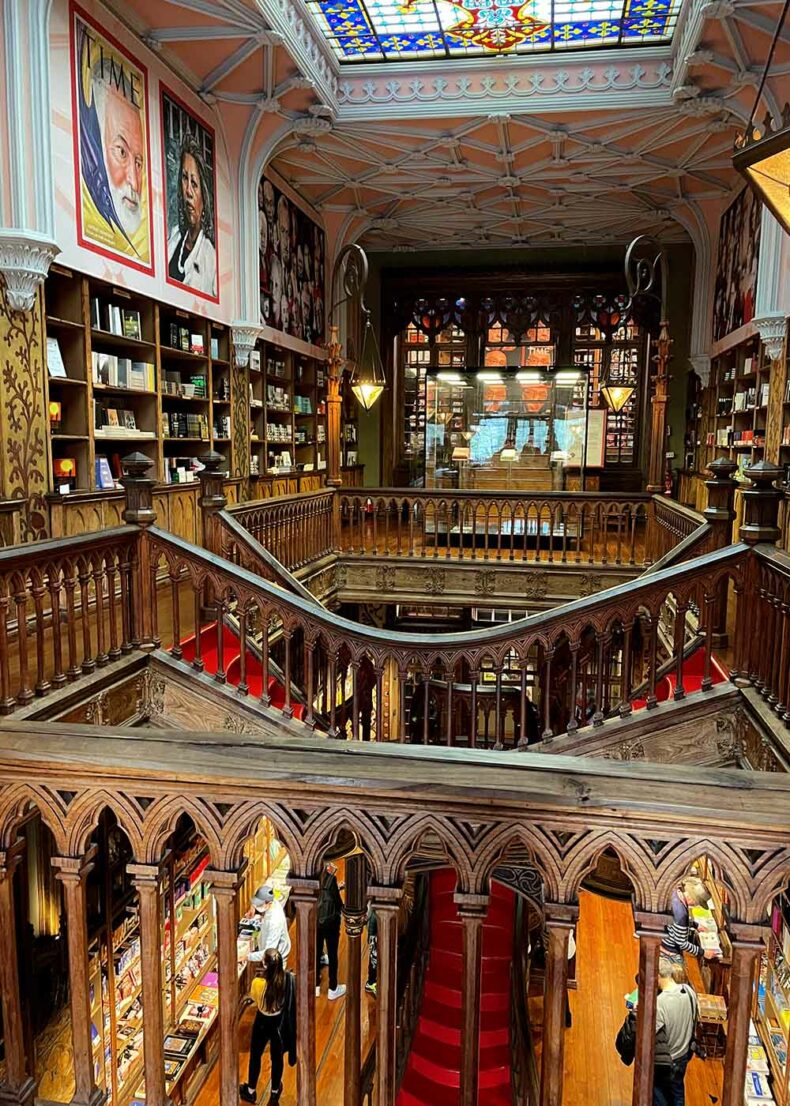
Photo by Tatjana Taurena
Get to know the vibrant creative scene of Porto
While Porto’s cityscape is impressive, it’s the people who create the city’s unique feel. There’s no better place to soak up the creative aura than the Bombarda district.
The area centres around the Rua de Miguel Bombarda and is full of art galleries, creative shops, and cafés.
Photo source: Instagram
Highlights include Galeria Presença and Galeria Fernando Santos, both of which spotlight native contemporary artists.
The best place for souvenirs is Ó! Galeria, which stocks illustrations, books, zines, and author pieces.
Additionally, visit Centro Comercial Bombarda, an unconventional shopping mall that features second-hand and independent designer stores alongside galleries and cafés.
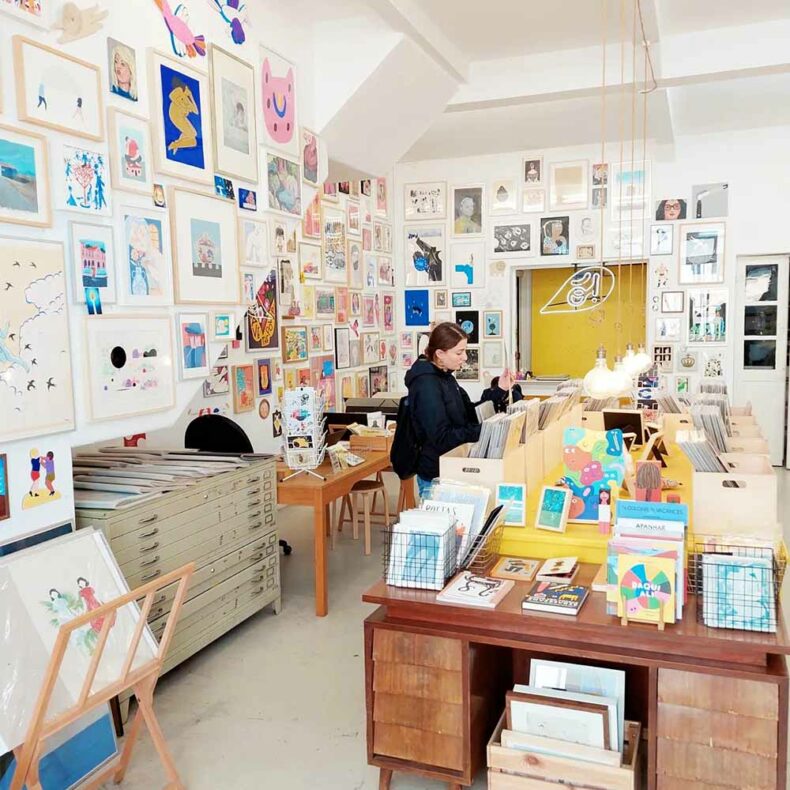
Photo source: Instagram
Early Made is another treasure trove, with designer items designed, made in, or created of materials from Portugal.
To sample native fashion design, head to The Feeting Room.
And if it’s a Sunday, start your hunt for gems at Mercado Porto Belo, where merchants sell everything from handmade jewellery to artwork and seasonal fruit.
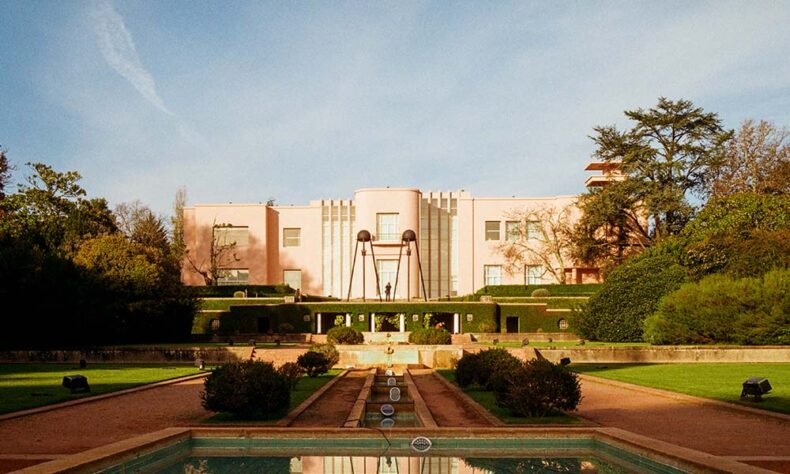
Photo source: Unsplash
Another site for culture connoisseurs is Parque de Serralves, which comprises several of Portugal’s vital cultural institutions, including the Museum of Contemporary Art.
This striking Art Deco monument was designed by the Pritzker Prize-winning architect Álvaro Siza and features an essential collection of local contemporary art.
Next is the futuristic Casa da Música, dreamed up by the legendary Dutch architect Rem Koolhaas and lauded for its superb acoustics and diverse programme of events.

Photo source: Unsplash
Indulge in delicious Portuguese cuisine
Among gastronomic nations bordering the Atlantic Ocean, Portugal is often overshadowed by France and Spain, but undeservedly so.
With petiscos (the Portuguese answer to Spanish tapas), hearty traditional dishes of seafood and pork such as tripas à moda do Porto, loads of spicy influences from the Age of Discovery, and flavourful port wine to top it all off, Porto is one of the most exciting gastronomic destinations in Europe.
Petiscarias are Portuguese-style tapas bars offering small plates to accompany drinks. Think calamari, olives, cheese, octopus salads, and Portuguese sausages such as alheira.
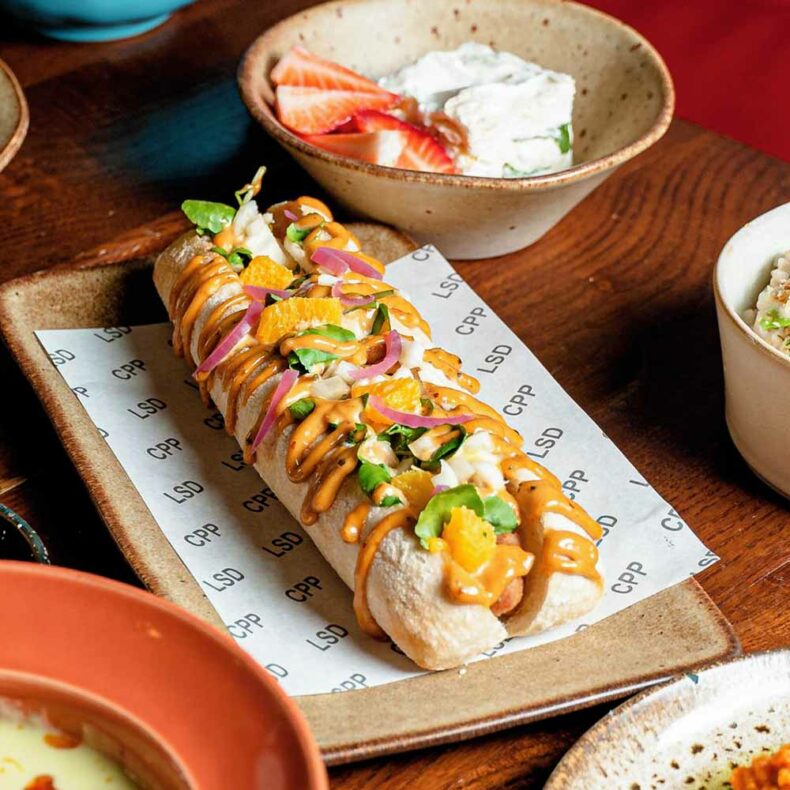
Photo source: Instagram
Casa de Pasto da Palmeira is a great waterfront location serving a refined take on Portuguese favourites – try a beautifully stuffed cachorro-quente (hot dog), enticing ceviche, and lip-smacking bacalhau (cod) croquettes.
The city’s most beloved comfort food is francesinha: a tower of generous slices of bread layered with ham, sausage, cheese, perhaps a fried egg, and doused in a tangy tomato sauce. A go-to spot for it is Café Santiago.
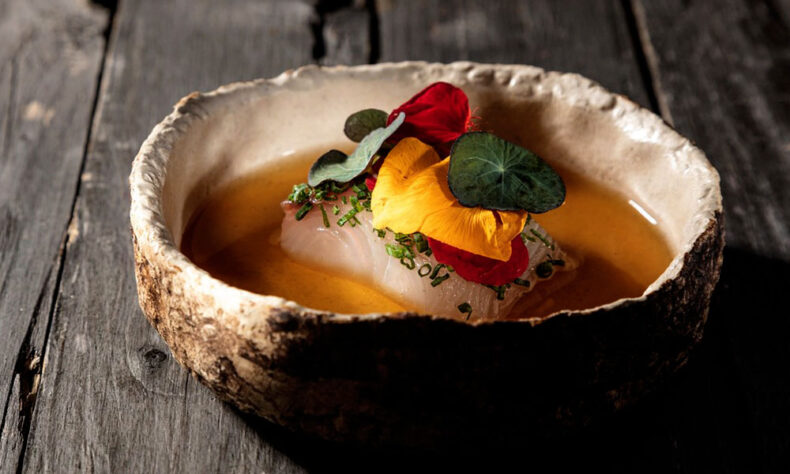
Photo source: Instagram
Porto also has a great list of fine-dining restaurants for more adventurous palates.
Pedro Lemos was the first in the city to earn a Michelin star. Located in an architectural landmark in the Foz district, it offers three tasting menus, all of which celebrate the freshest and best Portuguese products.
Or, take a seat at the marble counter of Euskalduna Studio. It’s inspired by the Japanese omakase dining concept, in which the chef prepares dishes whilst chatting with the patrons.
The ten-course tasting menu puts a creative twist on Portuguese cuisine, using seasonal ingredients from small-scale native producers.

Photo source: Instagram
But the city’s key export is port wine. To get acquainted with this jammy tipple, cross the river to Vila Nova de Gaia, where the wine cellars are.
The most famous of them is Sandeman Cellar. Founded in 1790, these winemakers are lauded for the quality of their wines and the enigmatic sandman figure in their logo.
A tour here takes you through the company’s history and includes a wine tasting. If you’re up for a crash course in winemaking, just steps away is the World of Wine (WOW) cultural centre opened in 2020, which features multiple exhibitions focusing on wine.
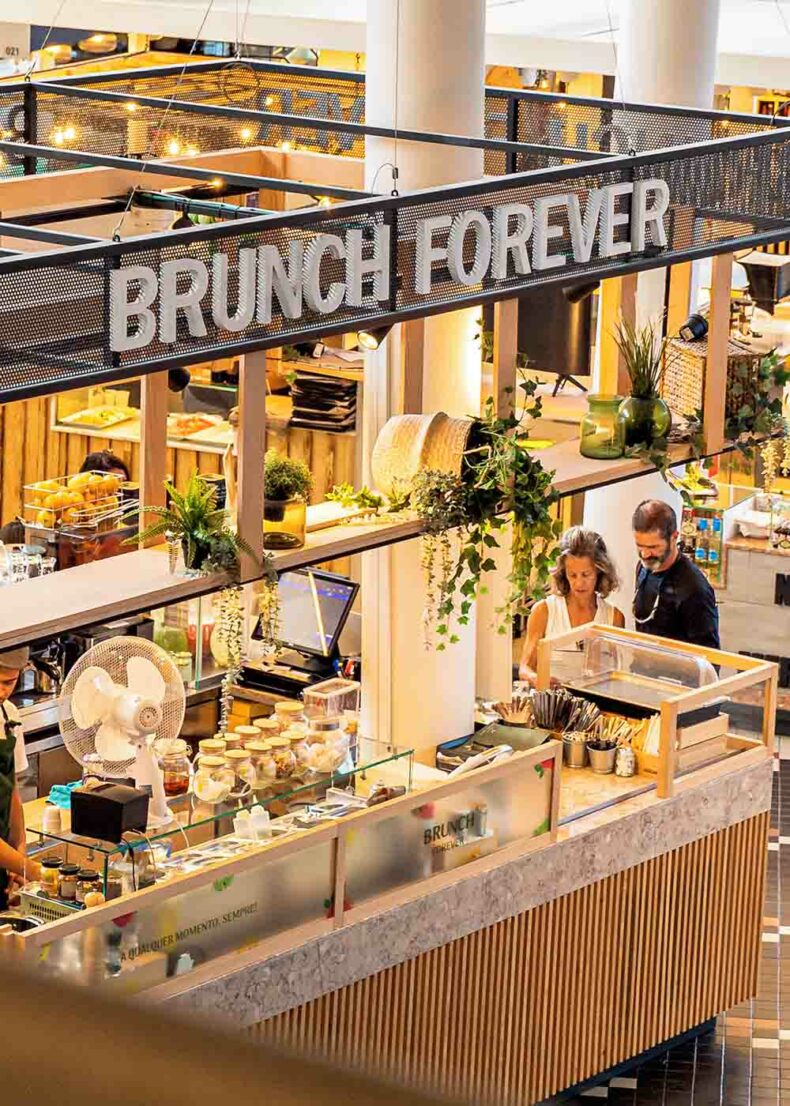
Photo source: Instagram
However, there’s no better place to get a comprehensive view of the city’s gastronomical scene than a food market.
After years of renovation, the iconic 19th-century wrought-iron Mercado do Bolhão opened to the public again this year.
Bom apetite!
Escape the city for a great day out
Braga and Guimarães are popular day trips from Porto. However, as most visitors are limited to a weekend in Porto, fitting in two separate day trips can be quite a challenge.
As a result, many travellers choose to combine visits to both Braga and Guimarães into a single day. There are two main ways to do this: either join a guided tour or venture out on your own, using public transport or a car. Despite the packed itinerary, it is possible to see both cities in one day.
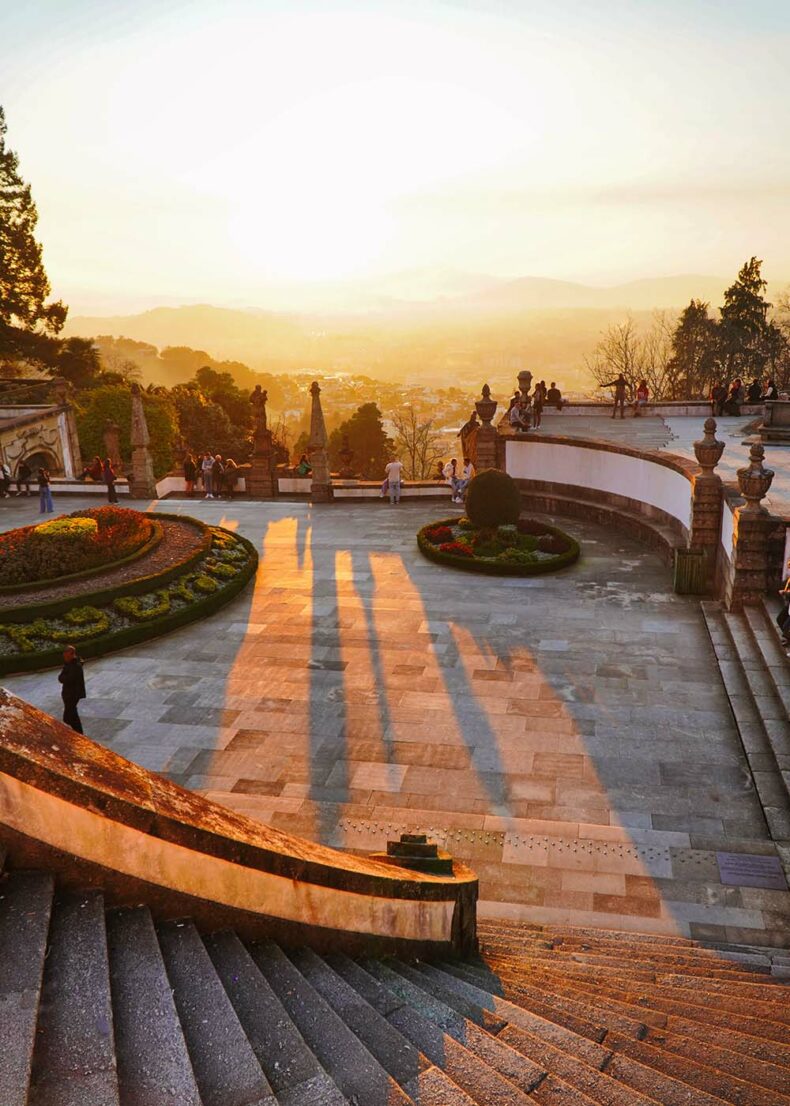
Photo source: Unsplash
It’s a good idea to start with Braga, as it tends to attract more visitors than Guimarães. You can get to Braga from Porto either by train or bus.
Once there, spend the morning soaking up the city’s charms. Braga has a wealth of stunning churches, the tranquil Garden of Santa Barbara and the magnificent Theatro Circo.
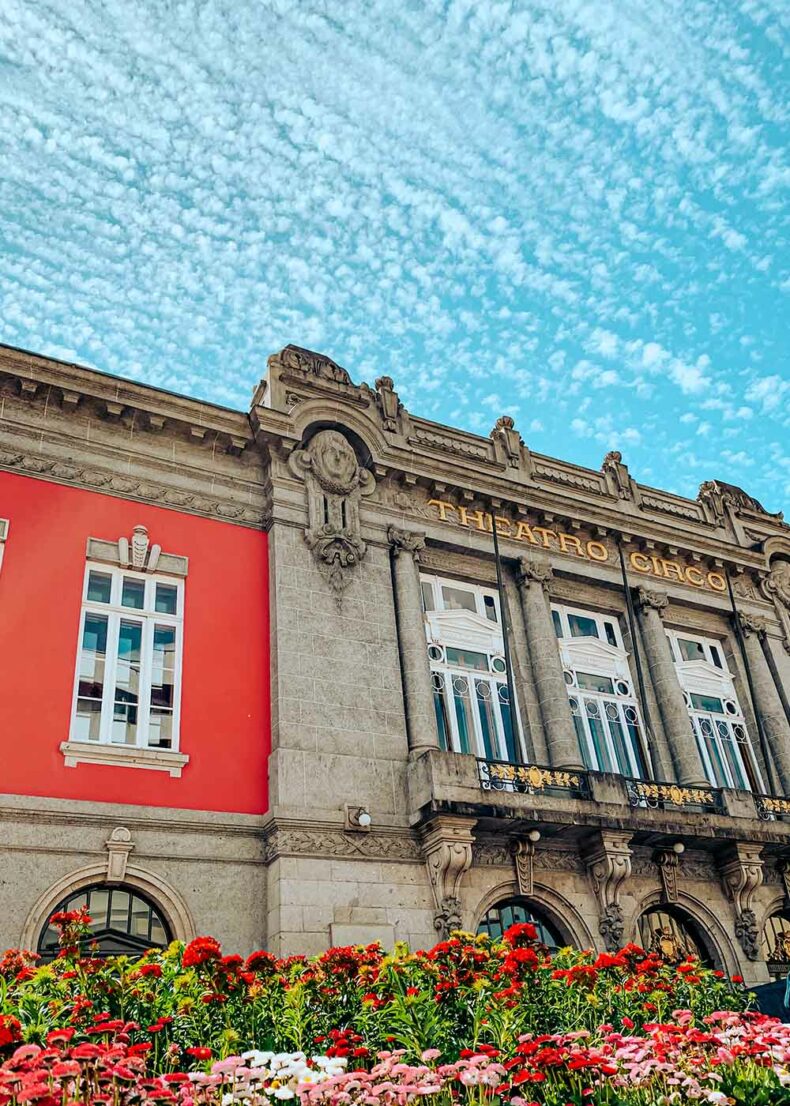
Photo source: Unsplash
But the highlight for many is Bom Jesus do Monte, a renowned pilgrimage site and one of Portugal’s most iconic landmarks.

Photo source: Unsplash
Guimarães, often hailed as the most beautiful city in northern Portugal (next to Porto, of course!), is reached by bus from Braga.
Once in Guimarães, be sure to visit its main attractions: the Castle of Guimarães and the Palace of the Dukes of Braganza.

Photo source: Unsplash
If you have time, take the cable car to Penha, a mountaintop retreat where you can enjoy a stunning sunset.
For the return journey from Guimarães to Oporto, both bus and train options are available.
Take an unforgettable road trip to the Douro Valley
A road trip through the Douro Valley is a must when exploring Porto. Start off in Porto, where the Douro River flows into the sea, and head east on the N222 road, which runs along the river.
Peppered with historical towns, gorgeous vistas, and stepped vineyards, this UNESCO World Heritage Site boasts a unique cultural landscape and traditional winemaking practices.
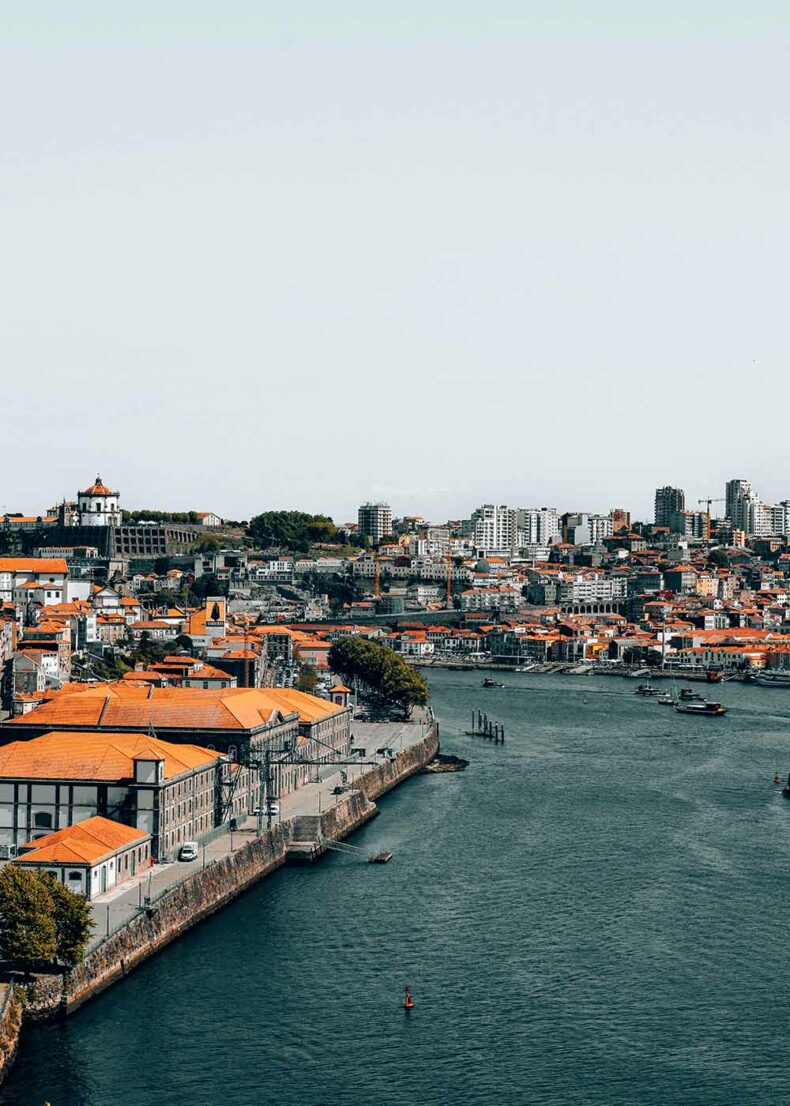
Photo source: Unsplash
Stop by the local wineries, or quintas, to indulge in the local varietals and learn about the distinctive wine-making process.
Some noteworthy estates include Quinta do Crasto, Quinta da Pacheca, and Quinta do Vallado.
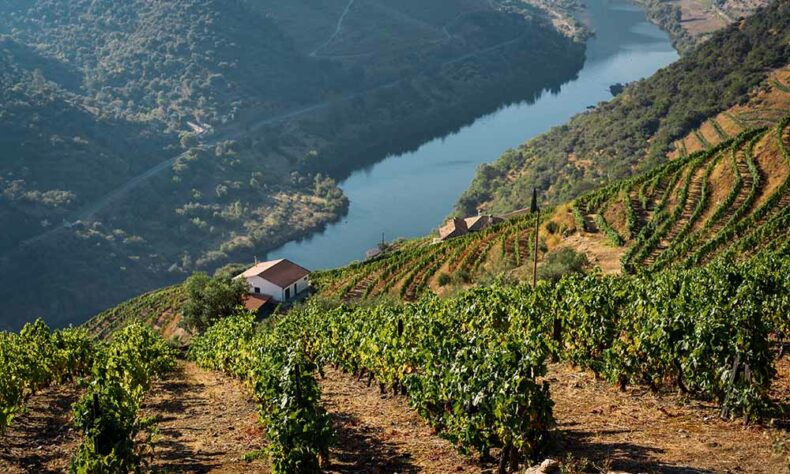
Photo source: Unsplash
In Peso da Régua, the Douro Museum will give you a crash course in local wine growing methods.
The village of Pinhão, for its part, is known for its colourful ceramic tiles illustrating scenes from the region’s history.

Photo source: Tripadvisor
On the south side of the river, Lamego is considered one of the most beautiful towns in northern Portugal. It sits at the base of a striking blue-and-white tiled flight of steps leading to the Sanctuary of Nossa Senhora dos Remédios – a stunning pilgrimage church.

Photo source: Tripadvisor
Accommodations vary from rustic guesthouses to luxury boutique hotels, but almost all feature a lovely view of the vineyards and river.
A trip can take up to two to three days, depending on how many glasses of wine you want to drink and how often you want to stop to snap pictures of panoramic views.
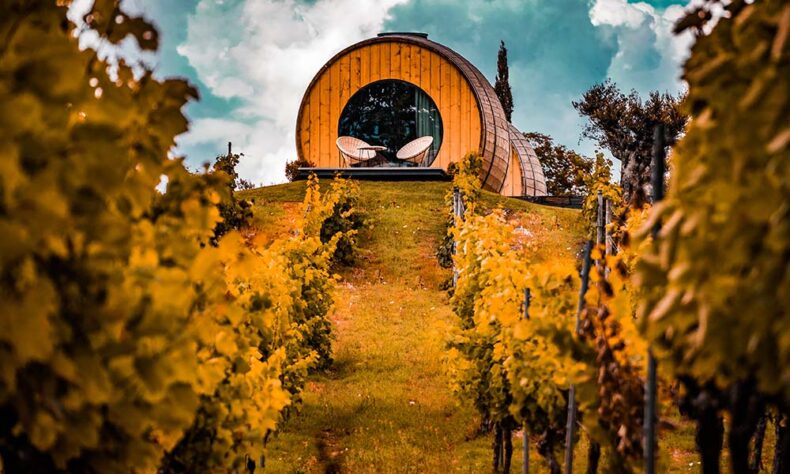
Photo source: Unsplash
Plan a circular route to return to Porto, or continue driving and discover the other attractions northern Portugal has to offer. And remember to drive safely!
